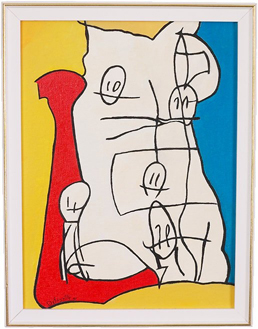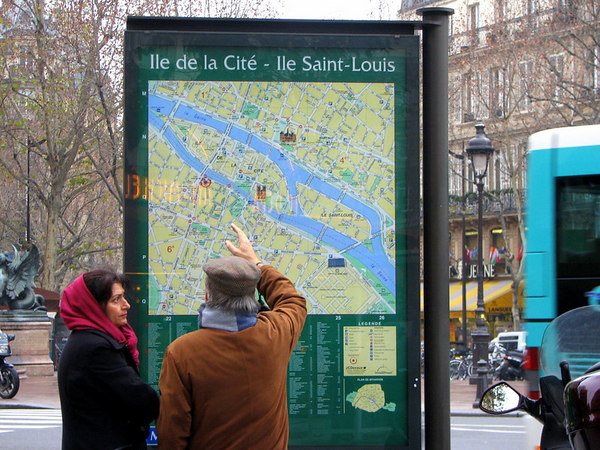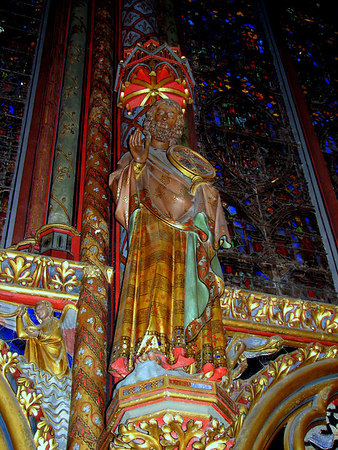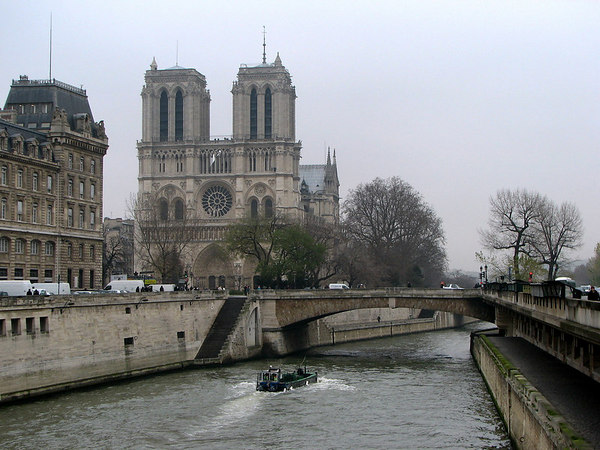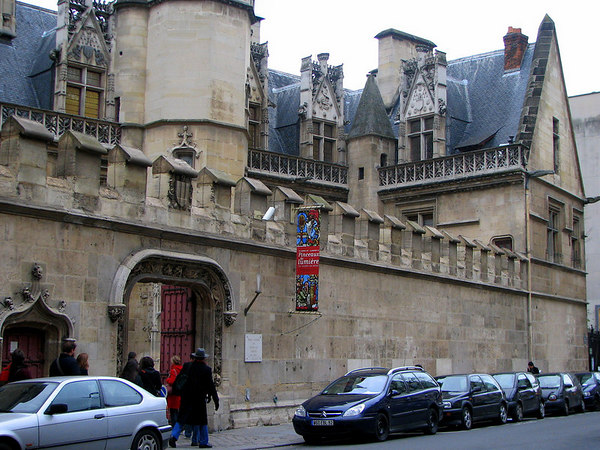Day 1: The Historic Heart of Paris
Let's begin where Paris did, on the Ile de la Cité, and visit the stunning Nôtre Dame cathedral and exquisite Sainte Chapelle church. In the afternoon, we'll stroll through the bohemian Latin Quarter and wander into medieval Paris at the Cluny Museum.
Rolinka gathered us little ducklings around her in the toasty hotel lobby and we discussed our route via the metro. We headed out left onto rue Augereau, left onto rue Grenelle, right onto Avenue Bosquetto, and jumped onto the Metro Ecole Militaire. Hey we did great, everyone stayed together and we all surfaced at the right place. Some of us were pros at this Metro gig, some were neubies but in the end who can't follow a few lines of color ?
Bundled up, we started out as a base point at The Île de la Cité, one of two islands in the Seine River (the other being Île Saint-Louis). The Ile de la City is like a great ship afloat in the river and the Gauls compared it to the boat used by Isis to seek her husband Orsis. It is the center of Paris, and the location where the city was founded. We caught sight of the biggie landmarks and oriented ourselves to the Boulvard de St Michel near the St Michel Plaza (During WWII occupation this was a place of many conflicts between occupying Nazis and the French resistance).
We followed the capa de groupa through the serpentine back streets of the littérateur Latin Quarter. It was
exactly as you would expect-- colorful, lively and filled with bistros. Lots of narrow, cobbled streets, with
eclectic shops to browse through. The Latin Quarter got its name from the numerous Latin Schools that were here once
upon a time! (A little sidebar of history) Rolinka pointed out a spot where a guillotine had stood which whacked off the heads of terrified commoners in the area, Le Razor in the Concord was for the more important people. The first guillotine was set up in front of the Hotel de Ville then moved to the Carousel Arch then to the place de nation. A scientist set to be razored showed he could blink 8 times after his head was severed..Yikes.
Already I was bringing up the rear because of my lagging taking photos but it worked out well because my bright yellow Big Bird jacket stuck out and let Rolinka know where the line ended.
From our point of departure of the Latin Quarter we scurried over to St. Chapelle. We made our way through the securty checkpoint because it is next to the Palais de Justice and exited into a courtyard where we got a short lecture on St Chappelle. Looking mundane and bleak from the outside just proved the book by the cover theory.
We entered the lower chapel, which was used for staff and servants and headed up to the ooohh and aahh upper chapel that was the private chapel of the king where the relics were kept. Go ahead try to read the windows, good luck..best just to admire the beauty of the stain glass. The Ste. Chappelle is home to some of the best
preserved stained glass windows to have survived from the medieval period. The windows date from 2 different periods -the tall lancets around the nave are mid-13th century and the west rose is 15th century. The lancets tell mostly stories from the Old Testament and the stories are told from bottom to top, left to right. One window telling a story not from the Bible is read from bottom to top but zig zags rom right to left and left to right. (First lancet on the right as you enter the chapel) This tells the story of the relics from their acquisition by Constantine in the 3rd century and their arrival at the St Chappelle in the 13th century. The Rose Window tells the story of the Apocalypse.
From St Chappelle we weaved our way through backstreets past Shakespear and Company to Notre Dame. Notre Dame built between 1163 and 1220 is not without its own mysteries. A brief history of the cathedralwas discussed and we then lined ourselves up to step on Point zero.
France's "Point zéro", the reference point for distances along the highways starting in Paris, is situated in the square in front of the cathedral. Tradition hold that tourists who stand on Point Zéro will one day return to Paris. After a thorough investigation of the Notre Dame we met back at the front of the church and headed over for an absolutely wonderful lunch at a local bistro. Had I not visited the Deportation Memorial on my last visit this would have been a must see on my list.
Herman Melville visited Paris in 1849, and the Hôtel de Cluny evidently fired his imagination. The structure figures prominently in Chapter 41 of Moby Dick, when Ishmael, probing Ahab's "darker, deeper" motives, invokes the building as a symbol of man's noble but buried psyche. A petite history of the place reved us up and we set out to explore the building. The day ended with bus ride number 87* back to the hotel. ( *Eiffel Tower - St. Sulpice - Odeon/Blvd. St. Germain - Cluny Museum - Latin Quarter - Ile St. Louis - Bastille. This is part of the route of the 87 bus. The terminus is Champs des Mars, the park between the Eiffel Tower and Ecole Militaire. This bus and the 69 follow 2 great routes to see Paris. The 69 goes mainly north of the Seine and the 87 keep mainly to the south. By choice I would take this one from Champs des Mars and the 69 from Bastille. ) Take a chance take the buses you see some great views and get to observe the locals.
